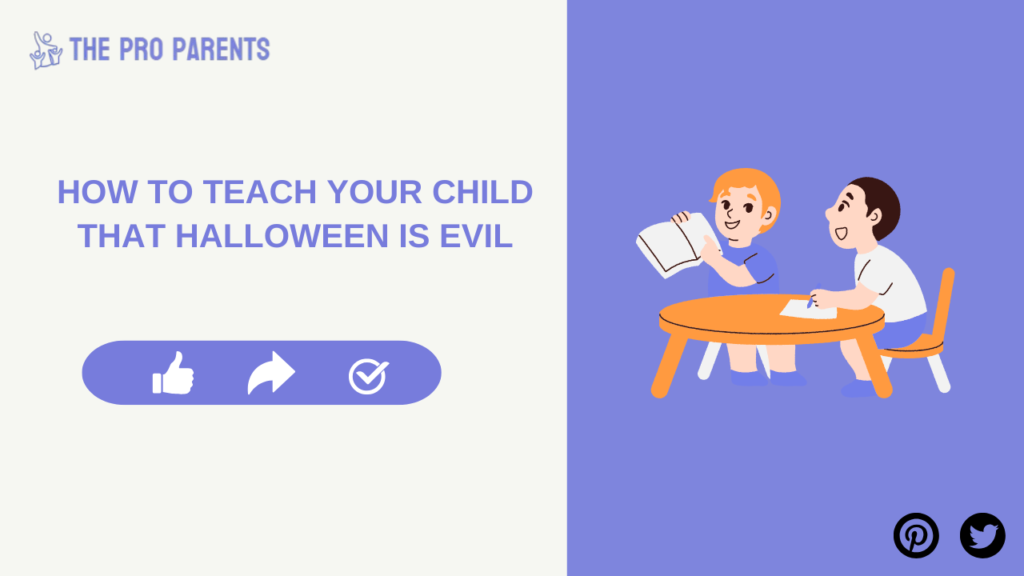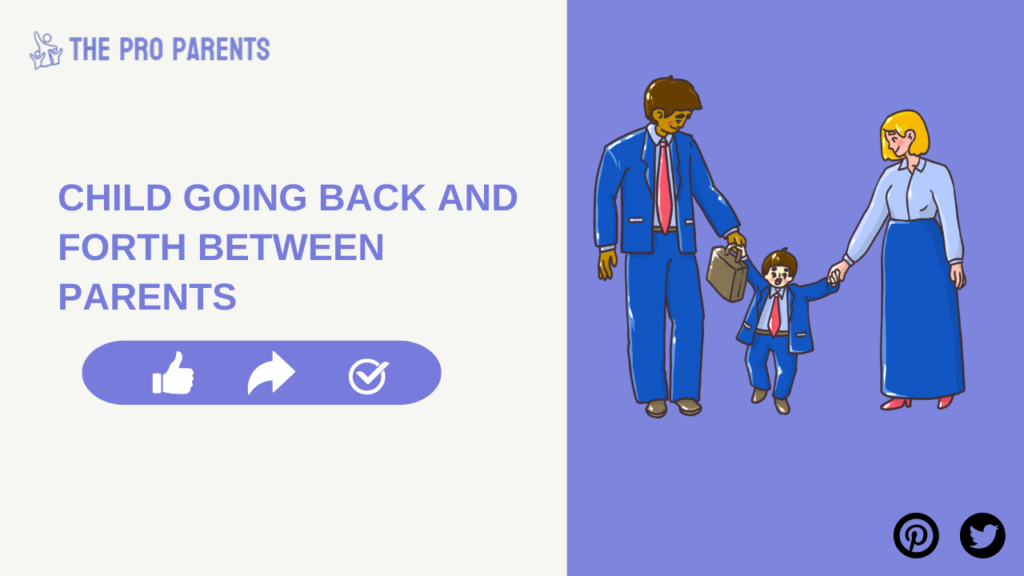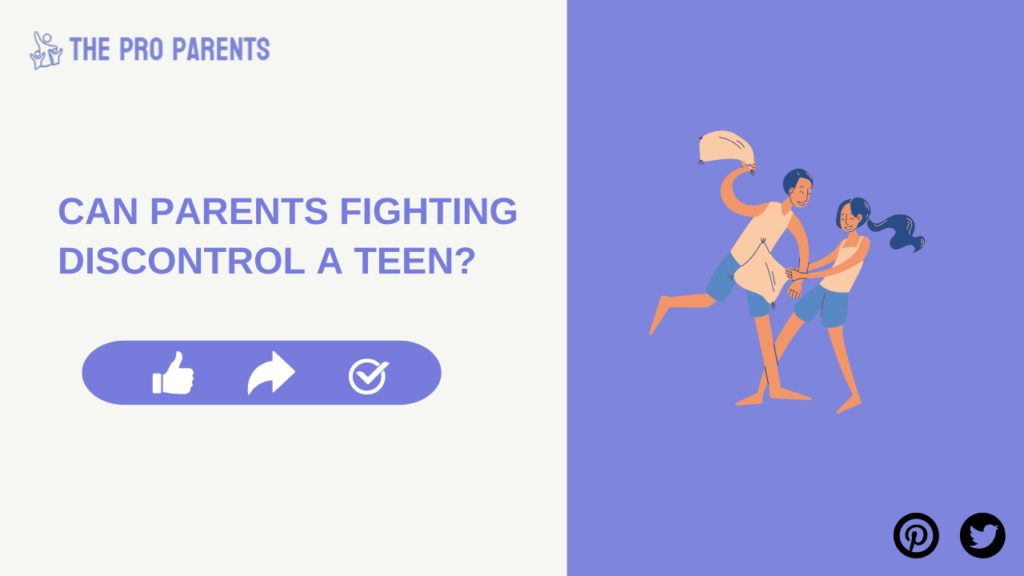Halloween is one of the most widely celebrated holidays around the world, but for many religious and conservative families, its origins and practices raise concerns that are difficult to overlook.
Table of Contents
If you’re a parent looking to communicate the negative aspects of Halloween to your child, you’re not alone. Many parents want to instill strong moral foundations in their children while providing guidance on cultural practices they do not align with.
This blog offers a thoughtful, step-by-step approach to teaching your child why your family refrains from celebrating Halloween and providing meaningful alternatives that align with your values.
Why Some Parents Choose Not to Celebrate Halloween
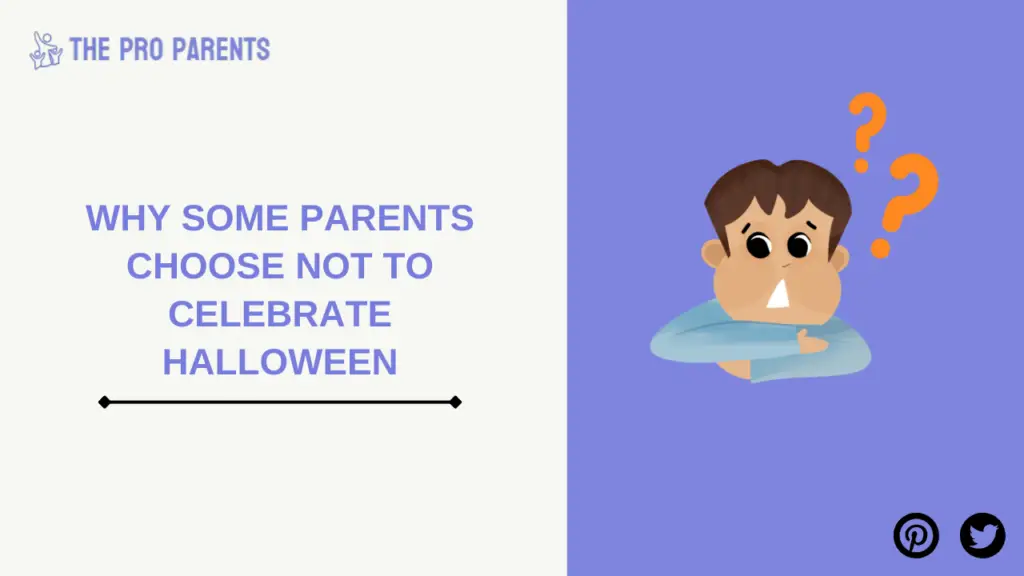
Halloween is often seen as harmless fun—a mix of costumes, candy, and spooky decorations. However, its deeper origins and some aspects of its modern-day practices raise questions for parents with strong moral and religious values.
From connections to occult imagery to promoting fear and non-spiritual traditions, Halloween might feel like a misalignment with the values many parents work hard to reinforce. More than just skipping the event, parents also want their children to understand why these choices matter, ensuring that these beliefs are passed down respectfully and confidently.
The decision to abstain from Halloween is a deeply personal one, but understanding the reasons some parents avoid it is a critical first step in teaching your child.
Understanding Halloween’s Origins and how to teach a child that celebrates halloween is Evil
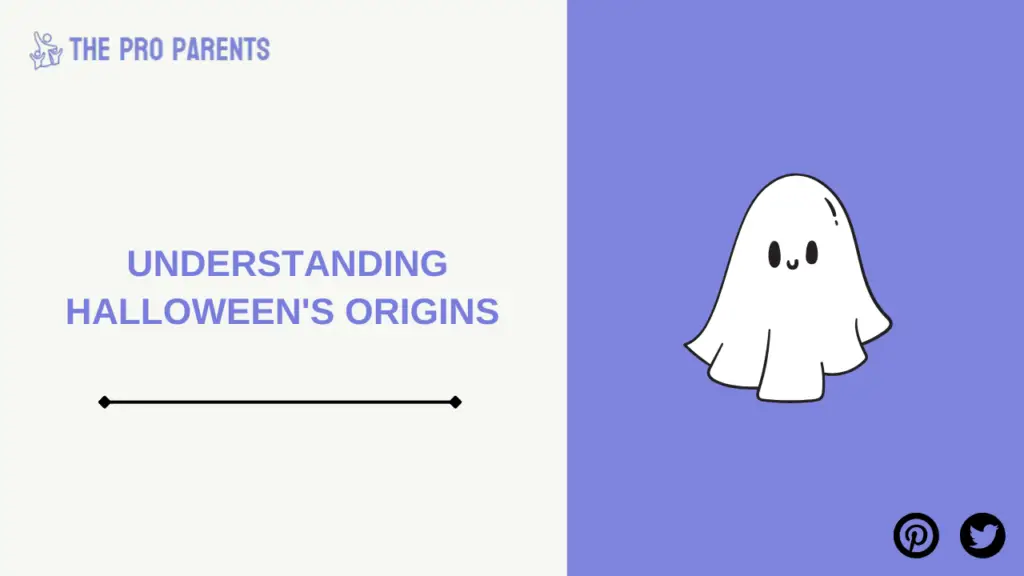
To explain why your family doesn’t participate in Halloween, it helps to start with its origins. The roots of Halloween trace back to ancient Celtic festivals like Samhain, a day when people believed the barrier between the living and the dead was thin. Over time, these traditions blended with Christian practices, resulting in what we now know as Halloween.
Despite its evolution, many still associate Halloween with occult symbolism, fear-based themes like ghosts and demons, and celebratory practices linked to the darker side of folklore. This history is why some view Halloween as an inherently “evil” celebration, as its rituals often feel removed from practices that focus on kindness, love, and faith.
By framing these historical details in age-appropriate language, parents can create a foundation for an honest discussion about why Halloween might conflict with a faith-based life.
The Negative Influences of Halloween
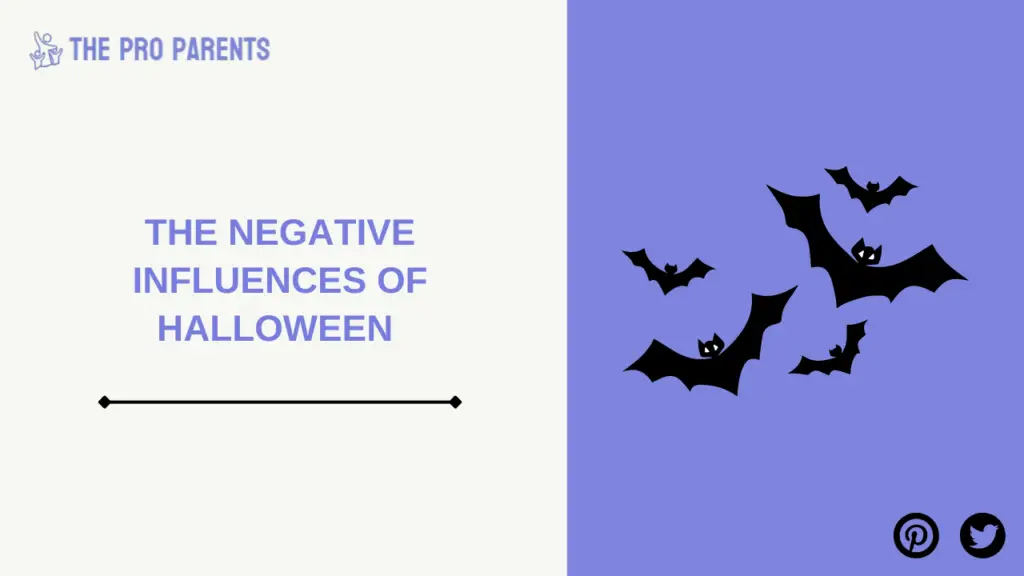
Even when separated from its historical context, there are modern aspects of Halloween that parents find concerning for their children.
1. Fear-Centered Themes
Many Halloween traditions celebrate fear, from scary costumes to haunted houses. This emphasis on fear is counterintuitive to the sense of security and confidence that parents try to foster in their children.
2. Moral Messages
Halloween often promotes mischievous behavior (“trick or treat!”) and celebrates characters like witches and demons, which may conflict with moral standards rooted in faith or decency.
3. Commercialization
Massive commercial pressure surrounds Halloween, from the costumes to the candy. This materialistic aspect takes the focus away from community, compassion, and family time, creating a hyper-focus on consumption.
By pointing out these downsides in relatable terms, parents can inspire their children to question the values of mass celebrations like Halloween while focusing on ideas that hold deeper meaning.
Opening Up the Discussion
How do you begin a conversation about Halloween with your child? Start by meeting them at their level of understanding.
1. For Younger Kids (Ages 4-8)
Use simple language to explain that Halloween is a holiday your family chooses not to celebrate because it doesn’t align with your beliefs. You can say something like:
“Some holidays are about love and kindness, but Halloween focuses on scary things, and we believe that’s not good for us.”
2. For Older Kids (Ages 9-12)
Encourage critical thinking. Discuss Halloween’s history or practices in more detail. For example:
“Halloween started as a festival about ghosts and spirits, and even today, it celebrates things we don’t believe in. Our values focus on spreading kindness and light, not fear.”
3. For Teens
Teenagers often care deeply about fitting in with friends, so it’s important to acknowledge their feelings while reinforcing your values:
“I know it can be hard when your friends celebrate Halloween, but as a family, we’ve decided to focus on traditions that make us better people. You can create your own fun traditions with confidence while respecting our beliefs.”
Conversations don’t have to be one-off talks—they can unfold organically as Halloween season approaches.
Fun, Positive Alternatives to Halloween
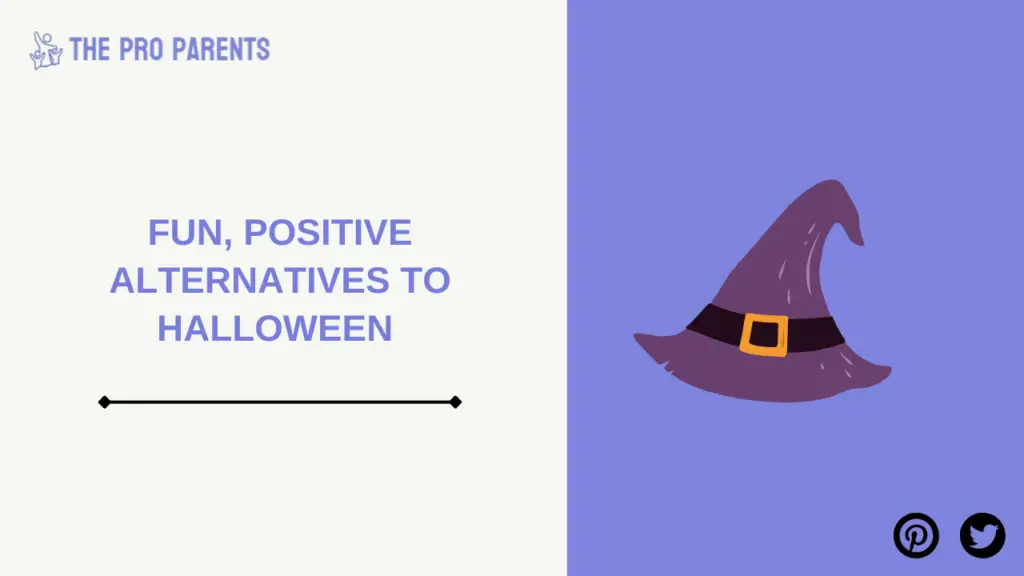
Teaching your kids why your family avoids Halloween doesn’t mean they have to miss out on the fun. Here are ways to make October special without participating in traditional Halloween events.
- Host a Faith-Focused Harvest Festival: Celebrate the season with pumpkin-themed crafts, festive autumn treats, and positive activities.
- Movie or Game Night: Plan an indoor family night filled with wholesome movies, snacks, and games everyone loves.
- Community Service Projects: Use the time to volunteer or give back to the community, like baking treats for neighbors or helping at a charity event.
- Seasonal Exploration: Go apple picking, decorate your home for fall, or take nature walks to appreciate the beauty of autumn.
These alternatives help children feel included in seasonal festivities while introducing values like gratitude, service, and creativity.
Navigating Peer Pressure
One of the hardest parts about not celebrating Halloween is helping your child handle questions or pressure from friends.
1. Teach Calm Responses
Help your child respond to questions with confidence and kindness. For example:
“We don’t do Halloween, but I’m so excited for my family’s harvest night—it’s my favorite fall tradition.”
2. Practice Role-Playing
Rehearse scenarios your child might encounter with their peers, like being asked why they don’t celebrate Halloween.
3. Celebrate Inclusiveness
Support your child in finding other ways to connect with their friends, like planning activities unrelated to Halloween where they can still bond.
This approach reminds kids they don’t need to follow the crowd to maintain meaningful friendships.
Building Strong Moral Foundations
While Halloween might be one holiday among many, teaching your child to reflect on its themes and values instills broader lessons that will guide them throughout their life.
Key Moral Lessons Tied to Avoiding Halloween
- Choosing What’s Right Over Popular: Help your kids develop a strong sense of identity, so they feel confident in standing apart when necessary.
- Exploring Faith-Driven Choices: Use Halloween as an opportunity to reinforce your family’s values and spiritual teachings.
- Focusing on Positivity: Prioritize events and traditions that demonstrate love, humility, and respect.
By grounding your decisions in your morals, your child will be empowered to approach other cultural celebrations with similar thoughtfulness and intentionality.
Empowering Your Child with Knowledge and Understanding
Ultimately, the goal of teaching your child that Halloween does not align with your values is about empowering them. Equip your child with moral clarity, respect for their beliefs, and tools to handle peer situations while still feeling included in meaningful family traditions.
By clearly communicating your reasoning, avoiding judgment, and offering positive alternatives, you pave the way for your child to confidently stand by their family’s values—on Halloween and beyond.
If you’re looking for ways to deepen your connection with your child and reinforce positive values, check out our full parenting resources, including expert tips from Chelsea Acton’s Famous Parenting Best Strategies.
Remember, raising children who can think critically and act with kindness is the greatest tradition of all.
How do I explain Halloween’s negative aspects to my child?
Focus on Halloween’s origins, its association with the occult, and offer alternative, positive celebrations.
What are some family-friendly alternatives to Halloween?
You can create traditions like harvest festivals, community service, or themed movie nights to celebrate the season.
At what age should I start teaching my child about Halloween?
A: Start as early as possible, tailoring the message to their age and ability to understand the cultural significance.
How do I handle peer pressure if my child wants to join Halloween activities?
Encourage your child to respectfully express their beliefs and offer fun alternatives to their friends.
Is it necessary to explain Halloween’s negative impact to my child?
Yes, teaching your child helps them understand different cultural practices and the importance of making informed choices.
